Overclocked: Our Custom Radeon HD 5870 Roundup
by Ryan Smith on May 19, 2010 11:53 AM ESTStock Performance
For our look at stock performance, keep in mind that these cards all have different factory overclocks. The MSI Lightning is clocked at 900/1200, the Sapphire Toxic at 925/1225, and the Gigabyte Super Overclock at 950/1250. Furthermore the Sapphire Toxic has 2GB of RAM, giving it an advantage in any games that benefit from additional RAM.
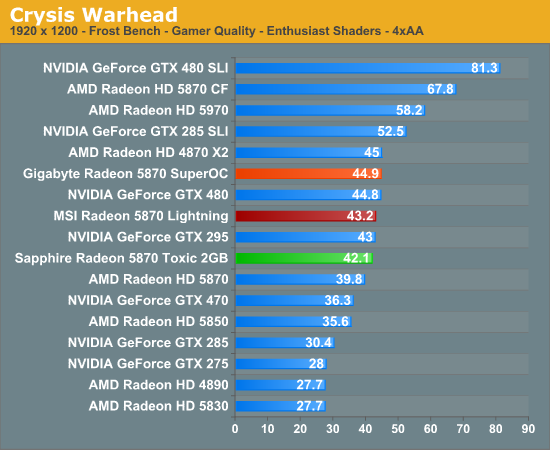

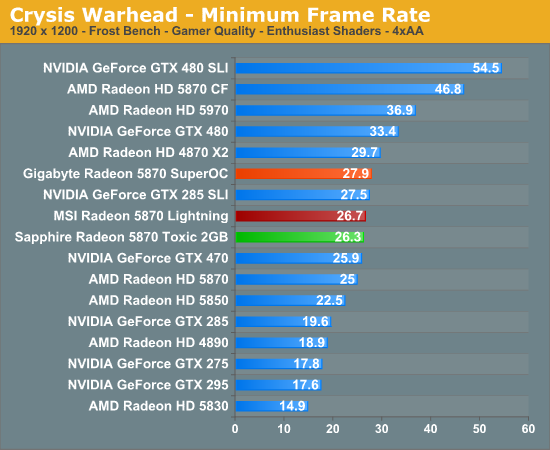
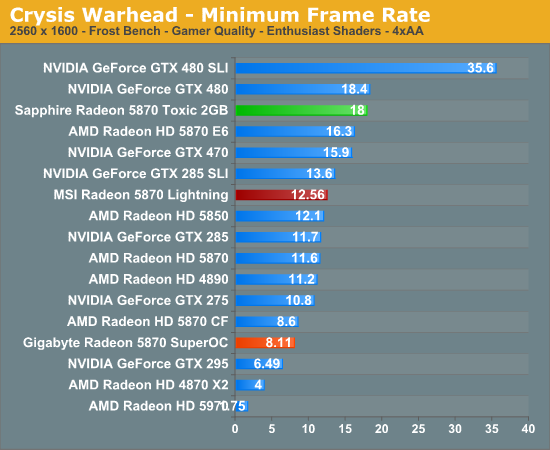
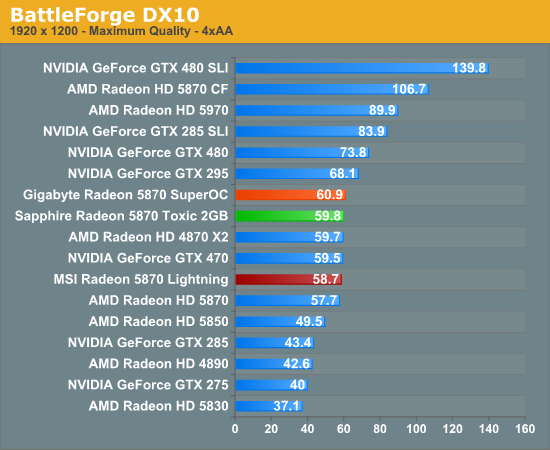
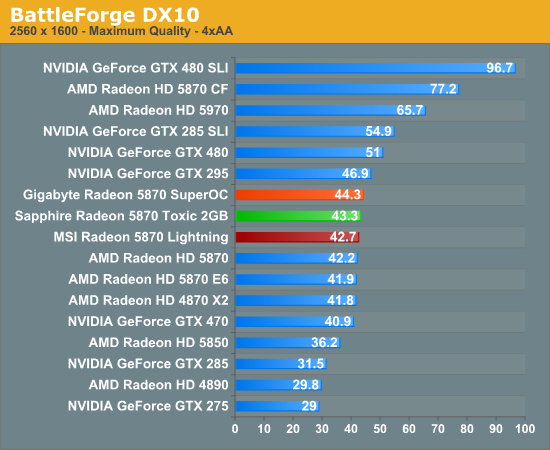
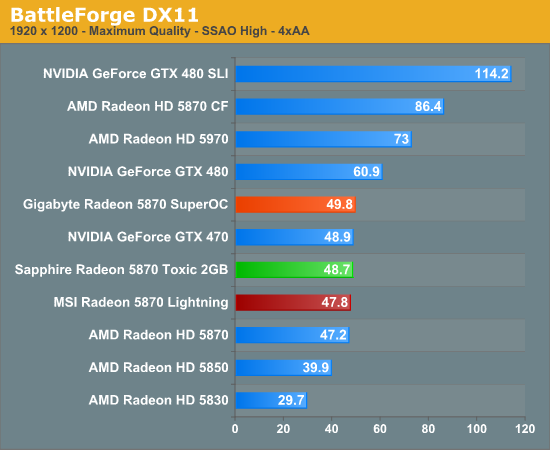
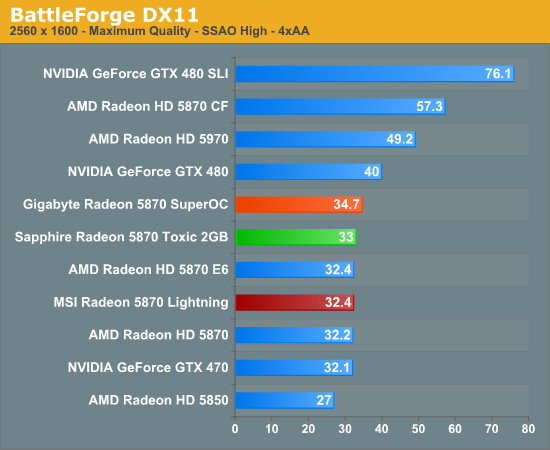
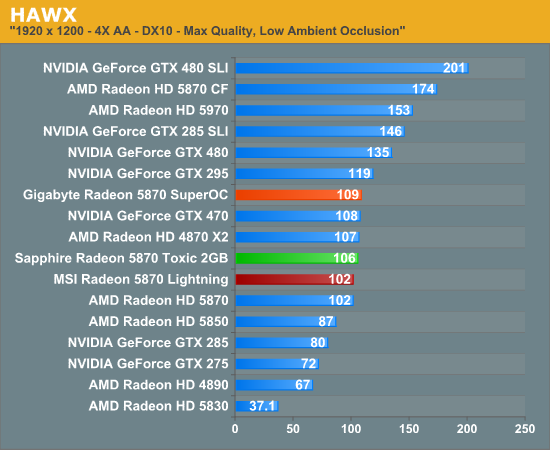
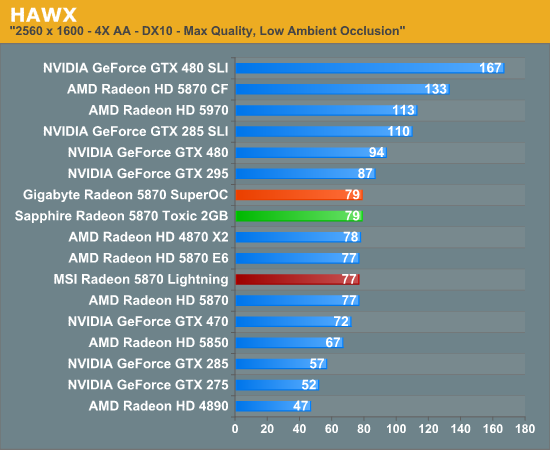
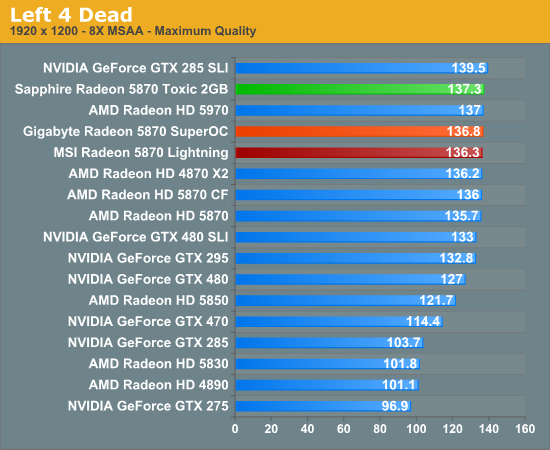
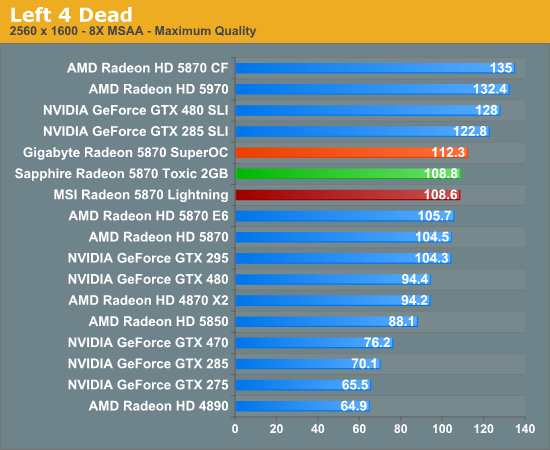
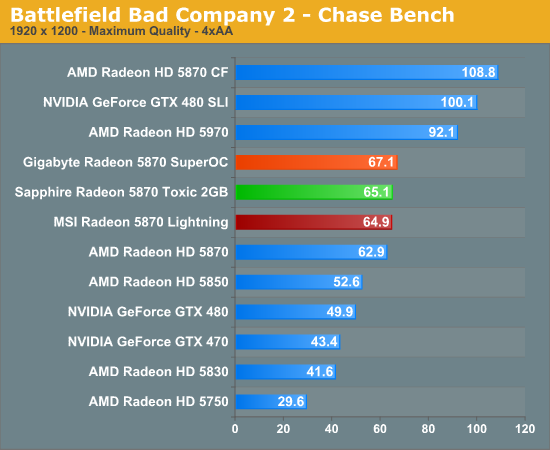

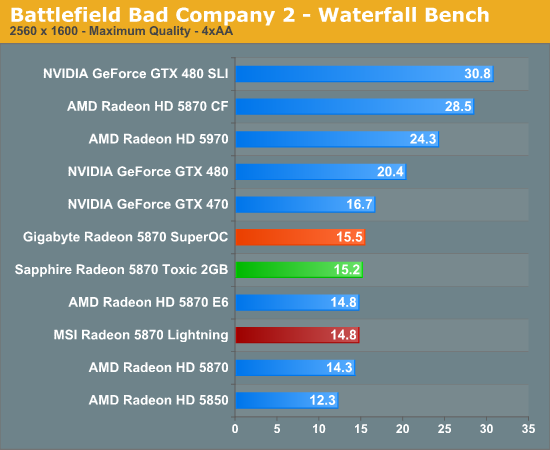
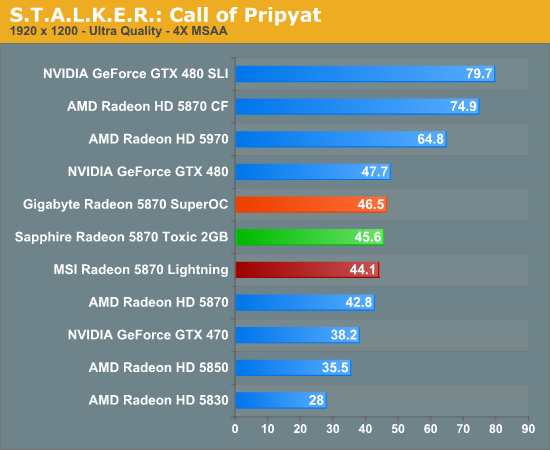
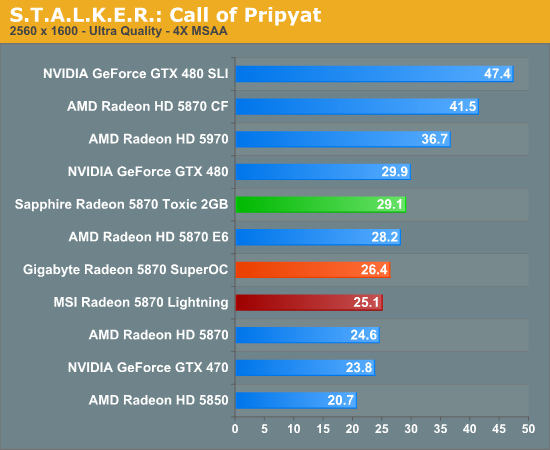
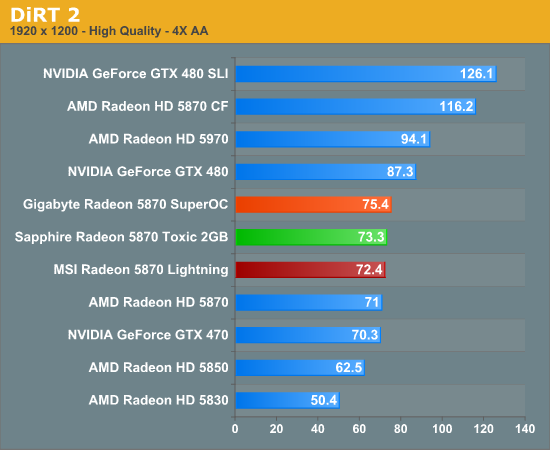
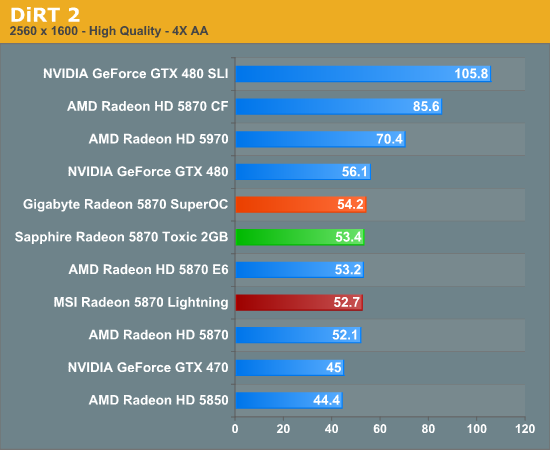

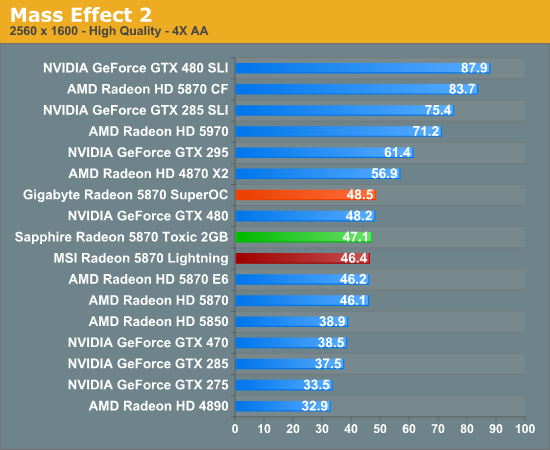
At our stock settings, the lineup is more or less as we’d expect it to be. Generally the Gigabyte Super Overclock, with the highest factory overclock, edges out the other cards. The exception to this is under Crysis and Stalker at 2560, where the extra RAM on the Sapphire Toxic 2GB. However with the exception of Stalker where 2GB 5870 cards take a clear lead, all of these custom 5870s are within a few percent of each other, making the difference more academic than practical.
Even with these overclocks though, anyone expecting a significant shift in the rankings will find themselves disappointed. These overclocked cards absolutely perform better than a reference 5870, with the Sapphire, MSI, and Gigabyte cards outperforming the reference 5870 by 5%, 1.5%, and 6% respectively, but more often than not they still fall behind the next-fastest card: the GeForce GTX 480. In a couple of close situations where the GTX 480 was previously winning by a hair however, one or more overclocked 5870s can edge it out.










43 Comments
View All Comments
dgz - Thursday, May 20, 2010 - link
Guys, you should really use Left 4 Dead 2 instead of the original game as the sequel is way more intensive on the system. The visual difference may not be stunning but the hunger for performance is there.Jumalauta - Thursday, May 20, 2010 - link
Very interesting roundup, thank you.Seeing how idle noise is basically The Gigabyte card's only flaw, I was wondering if you tried to remedy that by controlling the fan speed with MSI Afterburner software? It's VERY handy for creating custom fan speed curves. The only question is compatibility with Gigabyte's custom card.
sneakyB - Thursday, May 20, 2010 - link
This article comes at the best of time for me, I've been trying to decide for the last two weeks wich OCed 5870 to get. But I'm surprised that there's no Asus matrix in the review, maybe it's that we have it here in Europe and it's not on sale in the US ? I would have liked to see it compared to the Gigabyte, as my usual store has both for sale.FH123 - Thursday, May 20, 2010 - link
Was the Gigabyte clocking down properly on idle? I have a an Asus 5850, based on the reference design. Once you attach 2 monitors it no longer clocks down to something like 157MHz core / 300MHz memory, but instead idles at full speed 700MHz core / 1000MHz memory with a consequent rise in noise levels, which first alerted me to the fact.Jumalauta - Thursday, May 20, 2010 - link
If you take a look at idle GPU temps, I'd say the problem is elsewhere.FH123 - Thursday, May 20, 2010 - link
Agreed.Lonyo - Thursday, May 20, 2010 - link
You dropped Wolfenstein, one of the few OpenGL games, because of the way it responds, and yet you keep in Left 4 Dead, one of the most CPU limited games there is.Sounds like a great decision.
East17 - Thursday, May 20, 2010 - link
I think that there should be another chapter included in OC cards RoundUps :1)test the cards @ default settings (already done)
2)test the cards @ OC settings (already done)
3)try to see what PCB design and options are better by excluding the cooling limitation imposed by the specific coolers and test the cards @ OC setting WITH the best VGA cooler available at that time
I think this is a good idea and should be included in future reviews IMHO .
Have a nice day!
Jumalauta - Thursday, May 20, 2010 - link
You still wouldn't get anywhere due to GPU sample variance. You would need a lot of test samples of each variety to attain even remotely conclusive results.ajlueke - Thursday, May 20, 2010 - link
The fact that these cards are typically running around the $500 mark, which is the same price tag as an Nvidia GTX 480, is a deal breaker. You pay Fermi price without the Fermi performance. Stock 5870s can be had for $400 these days, and a sub 10% performance increase with a 25% price increase hardly seems worth it. It is possible to achieve similar overclocking results for less money and with less noise with a good after market cooler.